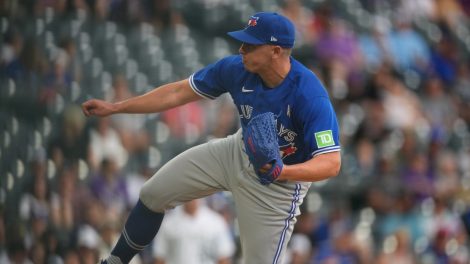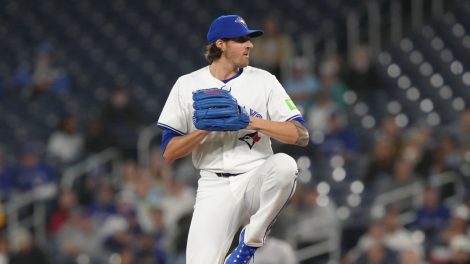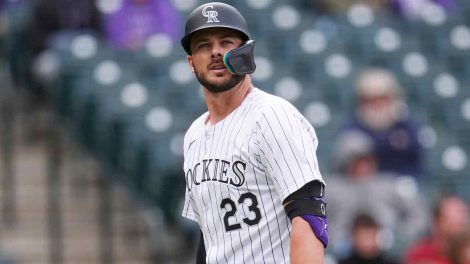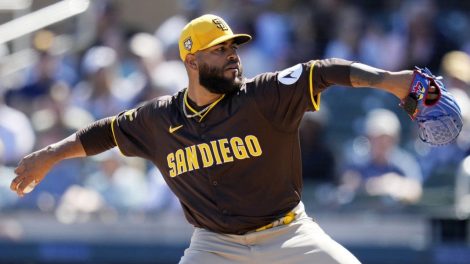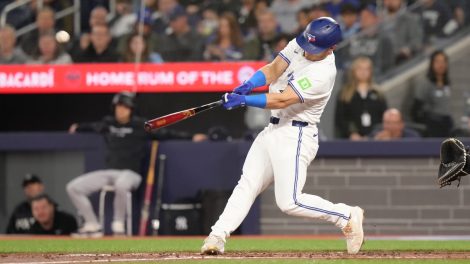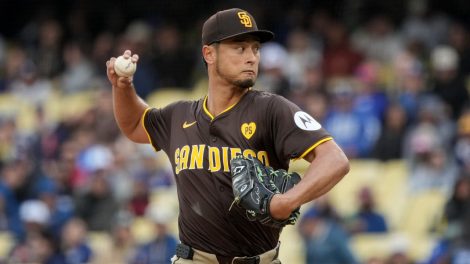TORONTO — As the Toronto Blue Jays continue to rebuild and retool over the next 24 months or so, endeavoring to construct a contender around top prospects Vladimir Guerrero Jr., Bo Bichette, and Nate Pearson, there will be many obstacles to overcome.
The common belief is that the deep-pocketed, oft-competitive Boston Red Sox and New York Yankees will be the primary antagonists Toronto must vanquish on its quest. And those two clubs will no doubt pose a threat. But there’s a third team in the American League East, one just as dangerous, hiding in plain sight. It’s the team that’s in town this weekend. These Tampa Bay Rays are going to be a problem.
They were certainly that on Friday, tagging Blue Jays starter Sean Reid-Foley for four runs (two earned) over four innings, then getting seven more off Toronto’s bullpen on their way to an 11-3 thrashing. It spoiled a stellar night for Lourdes Gurriel Jr., who went 3-for-4 with a pair of no-doubters over the batter’s eye in centre. And it likely won’t be the last time you see the Rays muck up Toronto’s best laid plans over the years to come.
That’s because in the early laps of the race between these teams the Blue Jays are trailing. Not only are the Rays on track to be very good at the exact same time the Blue Jays want to be very good themselves, they’re better positioned to do so. Really, there’s an argument to be made that the Rays are very good already.
While Thursday’s absurd Blue Jays walk-off was, for all intents and purposes, the end of Tampa’s playoff hopes, it shouldn’t shroud just how strong the club has been this season. The Rays played truly remarkable baseball just to stay in the race as long as they did, going an MLB-best 31-14 since the beginning of August with a +79 run differential. The Rays have led baseball in a host of categories over that span, including batting average (.269), OBP (.349), stolen bases (52), ERA (2.93), WHIP (1.05), and opponent’s batting average (.210).
If not for a disastrous early April, we’d likely be talking very differently about the Rays today. After starting the season 3-12, Tampa has gone 82-55, the fifth-best record in baseball. That’s good for a .599 winning percentage, which would put the club on a 97-win pace over the course of a full season.
Yes, the Rays are talented. Offensively, they’re a top-six MLB team in batting average (.259), on-base percentage (.334), stolen bases (117), and weighted runs created plus (106). Their pitching staff is top-five in ERA (3.63), FIP (3.75), and swinging strike rate (11.7 per cent). Defensively, Tampa’s in the top half of the league in fielding percentage (.985), DRS (19), and UZR (4.7).
The Rays are young. Eight of their 10 position players with the most plate appearances are 28 or younger. And that doesn’t include Ji-Man Choi (28), Brandon Lowe (23), and Nick Ciuffo (23), who have all been playing regularly since mid-season. Meanwhile, six of Tampa’s top eight pitchers in innings pitched are 26 or younger. Sergio Romo (3.71 ERA), Chaz Roe (3.54 ERA), and Vidal Nuno (1.45 ERA) are the only pitchers over the age of 30 to throw more than 14 innings.
The Rays are nasty. This season, Tampa ranks fourth in average fastball velocity. Of the eight current Rays pitchers to throw 60 innings or more for the club this season, four feature fastballs averaging 95 m.p.h. or harder. And both Friday’s opener Diego Castillo (98 m.p.h.) and Tyler Glasnow (97 m.p.h.) could join that group by the end of the year.
The Rays are cheap. They have only $10 million on the books next season — $8 million for Kevin Kiermaier and $2 million as part of the Evan Longoria trade — with the rest of their core either renewable near the league minimum or cost-controlled through arbitration. If the club wants to improve itself through free agency, or take on money in a trade, it’ll have the flexibility to do so.
The Rays are progressive. Friday was the 51st time the club has used an opener this season, an innovative approach that, while potentially unsustainable year after year, has been an undeniable success. Tampa pitchers boast the American’s League’s lowest first-inning ERA (3.32) on the season. And since the club first used an opener on May 19, the Rays have the second-best ERA in baseball (3.32).
The Rays are savvy. This July, the club’s front office flat out won the trade deadline, unloading expiring assets while adding useful pieces for their roster both now and down the road. Tommy Pham was acquired for a bargain price and has posted a 1.016 OPS over 29 games since. Chris Archer was turned into two talented, controllable, post-hype pieces in Glasnow and Austin Meadows, plus 2017 first-rounder Shane Baz. Nathan Eovaldi was flipped for Jalen Beeks, who’s posted similar numbers since the trade and comes with the benefit of six more years of control.
And the Rays are getting better. Per MLB Pipeline, the Rays have six of the top-100 prospects in the game, and four of the top 40. In June, FanGraphs listed eight Rays in its ranking of the top-131 prospects in the game, including five in the top 40. In August, Baseball America ranked Tampa Bay’s organization as the second-most talented in baseball, saying “this is a system loaded with future big league bats with an impressive amount of projectable pitchers as well.”
Any way you slice it, the Rays are a huge problem. The task for the Blue Jays over the next couple seasons is figuring out how to solve it.
[relatedlinks]



